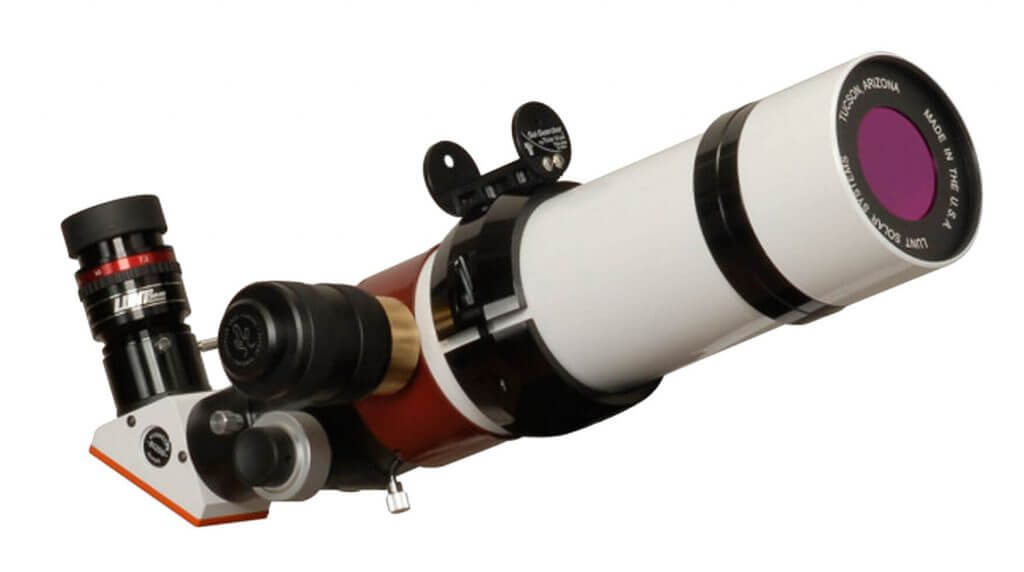Learn about the various components of a Lunt telescope…
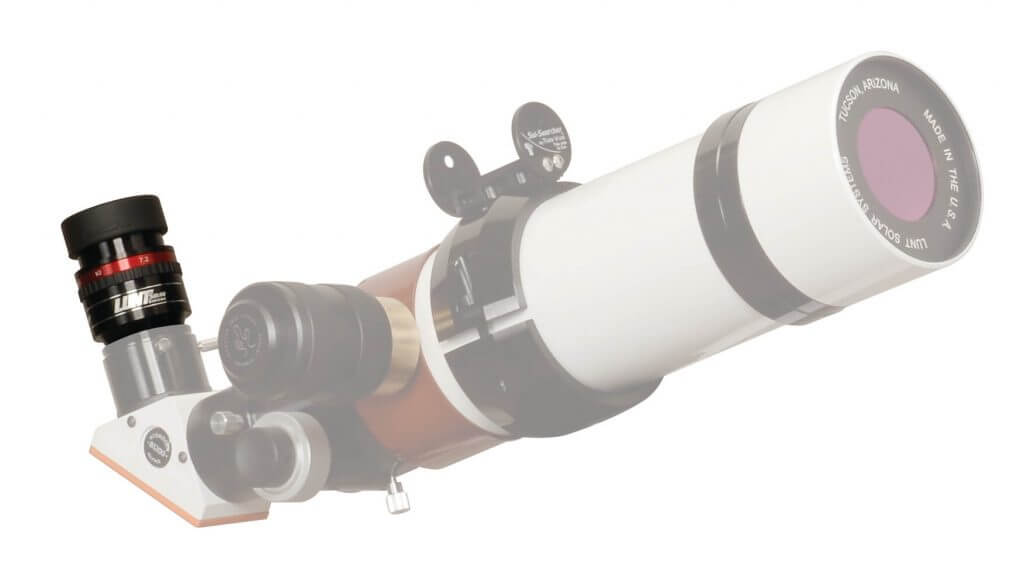
Lunt instruments can be used with any simple eyepiece. However, Lunt recommend the use of a zoom eyepiece due to the varying features that can be viewed on the Sun. A zoom eyepiece allows you to instantly magnify areas of interest. Lower magnifications can be used if seeing conditions are not ideal. Higher magnifications provide a WOW factor especially at areas of increased activity.

The eyepiece tube is available in a 1.25″ and a 2″ version. When ordering please indicate if a 2″ eyepiece is required. The eyepiece tube is removable for imaging. The mating threads are T2 and adapters are available for most cameras.
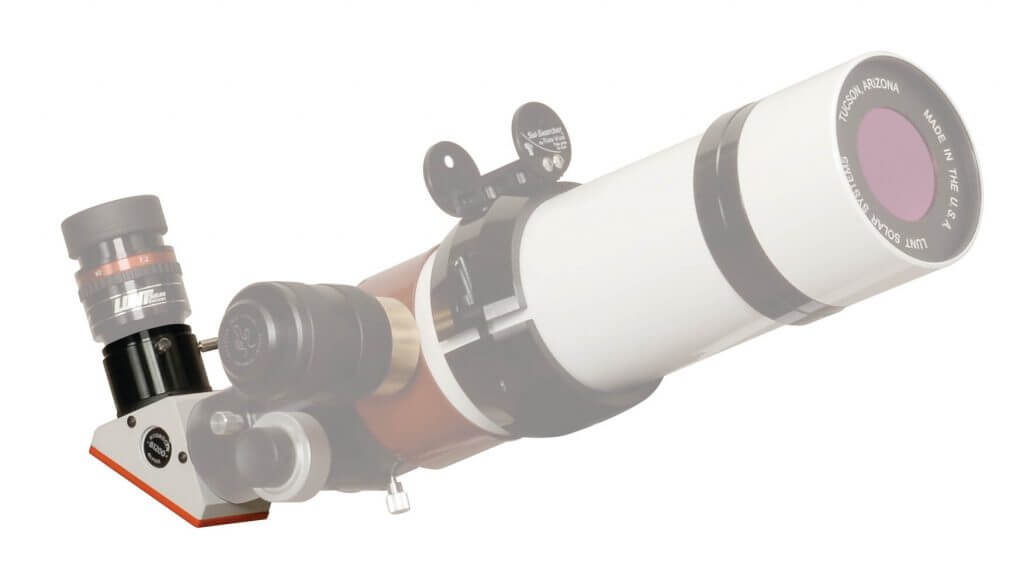
The Blocking Filter is actually a trimming filter and is required as part of the optical system. Blocking filters are available in various sizes: B600, B1200, B1800, and B3400. The number refers to the diameter of the blocking filter in mm, and also refers to the longest focal length of the OTA that Lunt recommends be used with it.
When imaging Lunt recommends that the user step up one size to ensure that the in-focus requirement of the camera does not vignette the light path. All Lunt blocking filters are 6 Angstrom bandpass and block the out-of-band harmonics of the internal etalon. Blocking filters contain UV and IR blocking filters and have a unique mirror design that enhances the contrast at 656.28nm.

There are 2 options for the focuser on a typical system:
- The 2″ Crayford style focuser is a good choice for visual use and most lightweight video cameras. It has features such as 10:1 fine focus, adjustable tension, focus lock, and 2″ of travel with minimal backlash.
- The 2″ Starlight Feathertouch focuser is an excellent choice for users that require a high level of precision and increased load capacity due to heavier camera loads and extended exposure times. It also features a very smooth 10:1 fine focus, adjustable tension, focus lock, and 2″ of travel with no backlash.
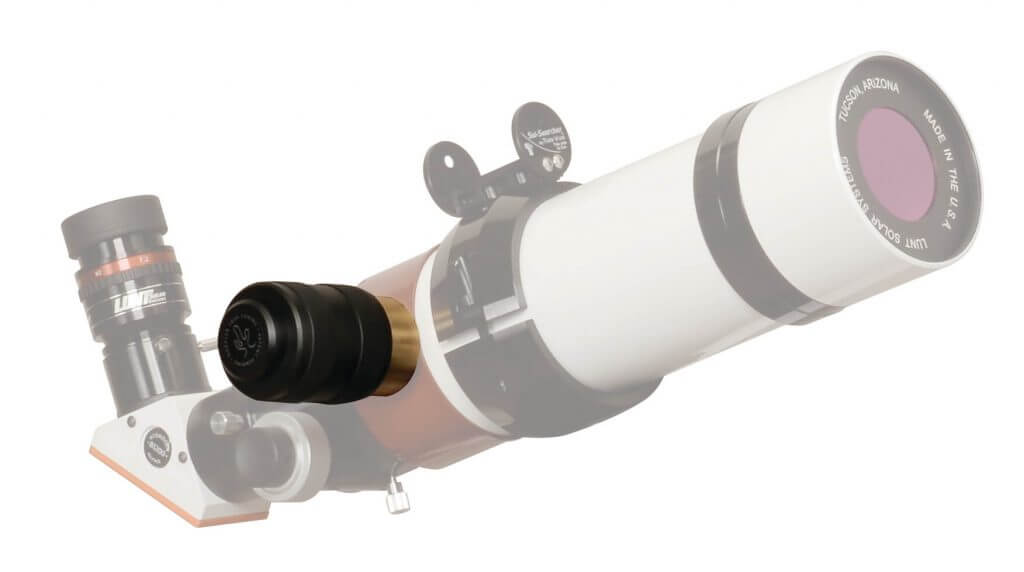
Lunt OTAs have 2 forms of tuning:
- Internal tilt tuning is an economical way of fine tuning the center wavelength of the instrument to the H-alpha line. All air spaced etalons are sensitive to changes in barometric pressure and tilt tuning is used to adjust the etalon to the required center wavelength (CWL).
- Pressure tuning is a method of ultra fine tuning the internal etalon. The etalon is placed into an airtight cavity and the piston is used to increase the pressure within the cavity to change the CWL. Because the etalon is not tilted, the image remains uniform across the field of view. Lunt recommends the use of pressure tuning for internal etalon systems.

The Optical Tube Assembly (OTA) is heart of the Lunt instrument and is defined by the aperture of the objective. OTAs range in size from 40mm to 305mm. The 40mm is our entry-level product providing excellent images of the Sun in small detail. As with all telescopes, the larger the aperture the more resolution that can be achieved (seeing conditions permitting). Lunt OTAs contain an internal etalon system that provides a standard <0.7 Angstrom bandpass at 656.28nm. The OTA contains filters for 100% blocking of all UV and IR energy.
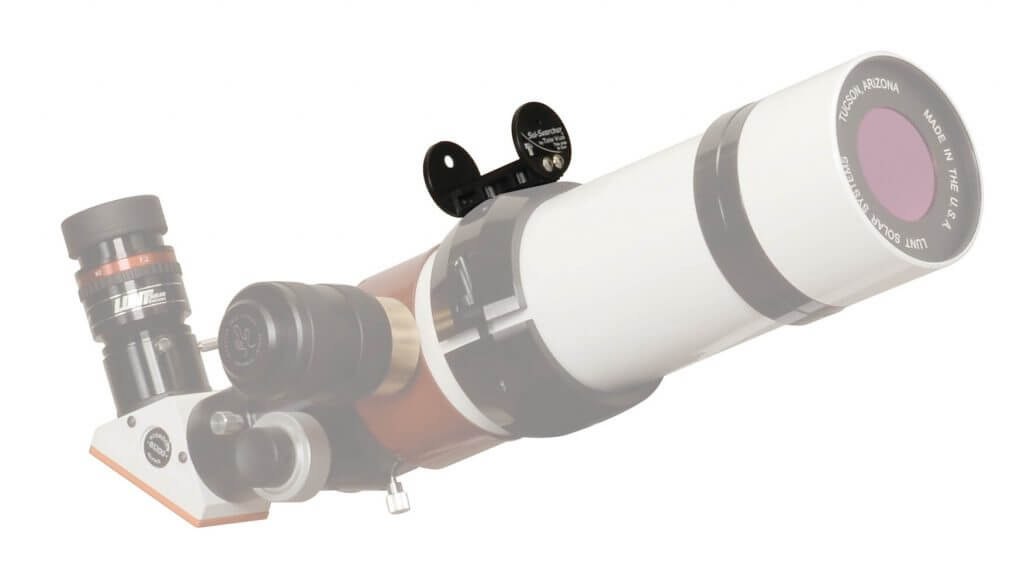
While the Sun is a large object in our sky it can still be difficult to find with a telescope. The Sol Searcher is a highly recommended tool that will greatly reduce the time and frustration of lining up the telescope with the Sun.
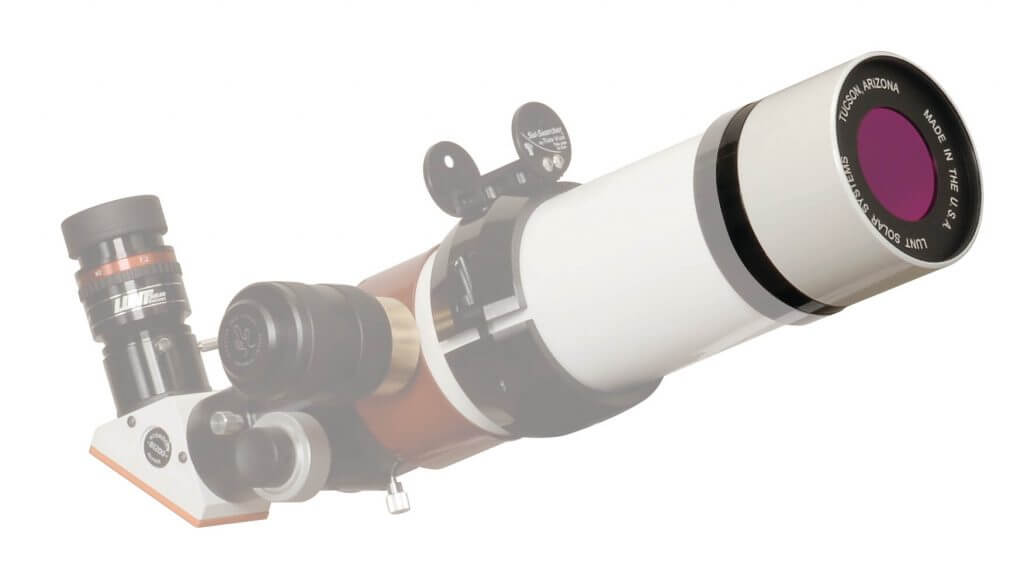
As pictured, the front mounted solar telescope filter is being used to double stack the instrument. This solar filter contains an etalon with a bandpass of <0.7 Angstroms. This solar filter can be used on a customer supplied OTA with an adapter plate to view H-alpha, or, as in this case, can be added to a dedicated Lunt solar filter telescope to reduce the bandpass of the instrument to <0.5 Angstroms, increasing the contrast and detail that can be viewed. The front mounted solar telescope filter has a built-in Energy Rejection Filter (ERF) that prevents all UV and IR from entering the etalon.
